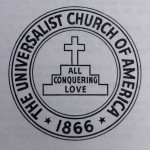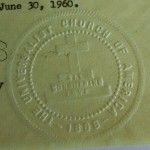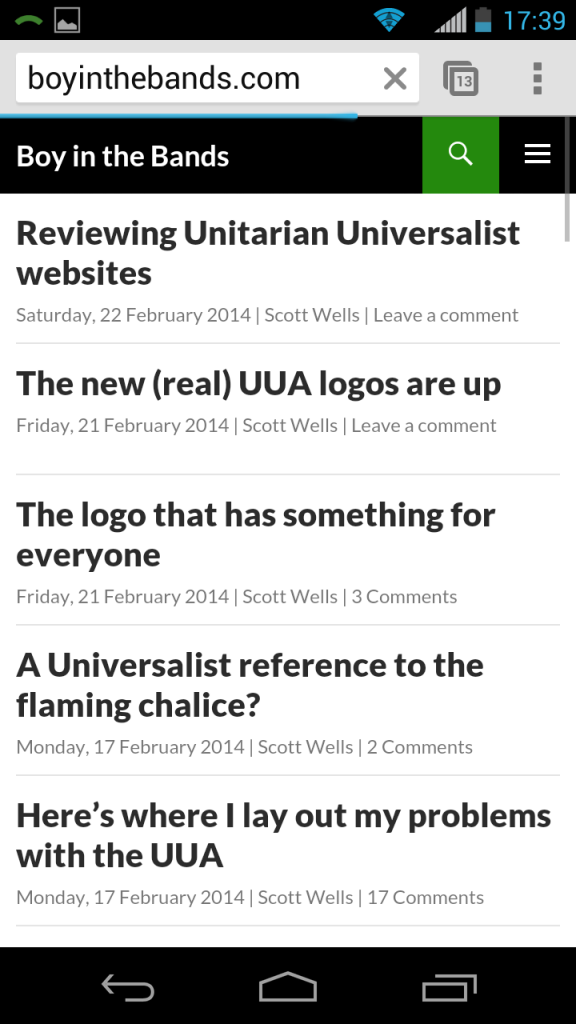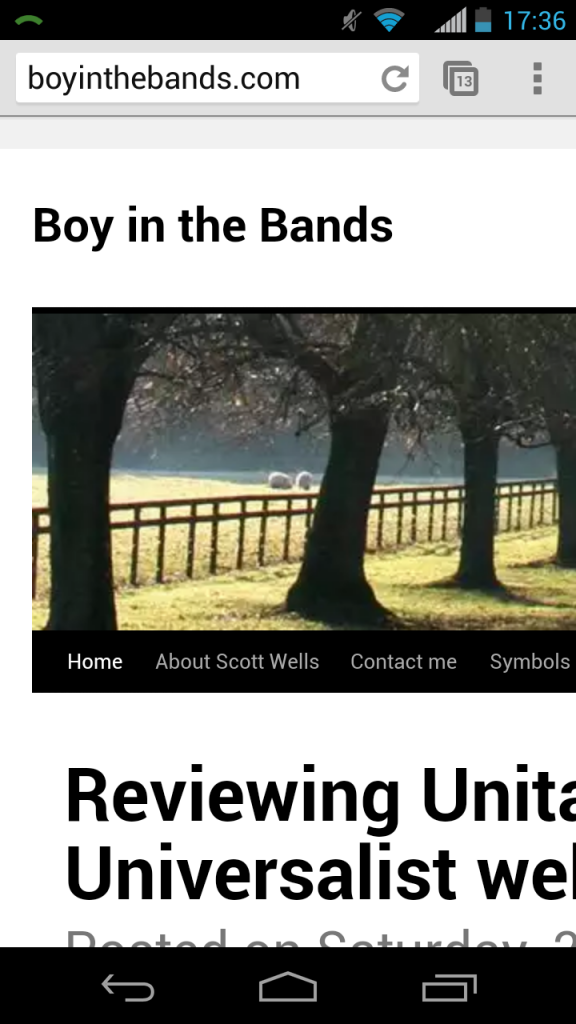 When the new UUA logo came out recently, quite a few people (myself included) japed about it on Facebook and mused about the past logos, some quite old. I noted the Universalist “Christ Will Conquer” seal and the off-center cross.
When the new UUA logo came out recently, quite a few people (myself included) japed about it on Facebook and mused about the past logos, some quite old. I noted the Universalist “Christ Will Conquer” seal and the off-center cross.

But dang if, in my research at Harvard-Andover Theological Library, I didn’t find a missing link graphically between the two. It should be noted that I have found no official adoption for any of these logos, but it’s not the sort of thing that’s voted upon, so I suppose the most we’re ever likely to find (if anyone looks) is a launch notice, and probably not even that. We live in a branded age today, and I suspect these earlier “logos” were originally corporate seals (as we’ll see evidence below) that later took on an “inked” existance, much as the flaming chalice started on letterhead.
So let me introduce the “All Conquering Love” seal.
 I’m guessing that it did not predate 1935, when the Washington Avowal was adopted by the Universalist General Convention (UGC) at the still-swank Mayflower Hotel, a short walk from my day job office and a lovely place for drinks.
I’m guessing that it did not predate 1935, when the Washington Avowal was adopted by the Universalist General Convention (UGC) at the still-swank Mayflower Hotel, a short walk from my day job office and a lovely place for drinks.
The version of the image here is from the cover of the 1946 edition of the Laws of Fellowship, and in this context I wonder if its release was associated with the UGC’s 1942/43 re-conception as the Universalist Church of America.
The whole Washington Declaration text is a historical layer cake, and its use was to define the terms of fellowship between the General Convention, the state conventions, the churches and parishes and the members of the ministerial college. The Avowal is its core, with the text in bold type being the part best remembered:
The bond of fellowship in this Convention (church) shall be a common purpose to do the will of God as Jesus revealed it and to co-operate in establishing the kingdom for which he lived and died.
To that end, we avow our faith in God as Eternal and All-conquering Love, in the spiritual leadership of Jesus, in the supreme worth of every human personality, in the authority of truth known or to be known, and in the power of men of good-will and sacrificial spirit to overcome evil and progressively establish the Kingdom of God. Neither this nor any other statement shall be imposed as a creedal test, provided that the faith thus indicated be professed.
And while you can draw a straight line from “the supreme worth of every human personality” through “to affirm, defend and promote the supreme worth of every human personality” (from the 1961 Principles) to “inherent worth and dignity of every person” I think that image of God being Eternal and All-conquering Love is far more evocative, even thrilling.
 Back to the idea that it was a seal: well, I found two cases (1958 and 1960) of the UCA corporate seal with this design, the rings simplified. Here is the easier-to-read 1960 version: a level of officialdom the off-center cross could not claim. (I did see it on the letterhead of the Illinois state convention; Clinton Lee Scott’s influence from his Peoria pastorate?)
Back to the idea that it was a seal: well, I found two cases (1958 and 1960) of the UCA corporate seal with this design, the rings simplified. Here is the easier-to-read 1960 version: a level of officialdom the off-center cross could not claim. (I did see it on the letterhead of the Illinois state convention; Clinton Lee Scott’s influence from his Peoria pastorate?)
















